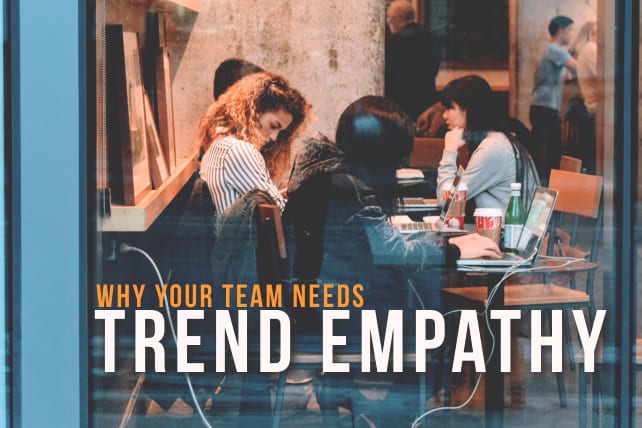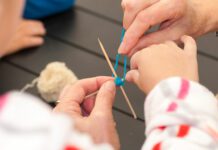It’s not rare for me to get mic dropped by my kids.
One day while I was texting and scootering in my driveway with my 7-year-old. She said, “Mom, if you’re going to be a kid, THEN BE A KID!”
She was calling me out. I obviously didn’t know what “being a kid” meant and felt doubly arrested for being on my phone. I sped up on the scooter and said, “There! Is that better?”
She said, “That’s better but you have to learn the new tricks.”
That sounded like an invitation to the ER. I didn’t want to learn the new tricks because, to be honest, I hadn’t learned the old ones. It sounded painful—but to make a connection, I was going to have to try.
Maybe you’ve felt this way learning about the ever-changing trends and the dynamic and shifting phases in a kid’s life?
If you’ve felt this way, then I guarantee the volunteers you lead have felt overwhelmed by them too. The amount of trending happening in the world is enough to make anyone want to pull their pop culture hair out. Who can understand all of the things? No one. Who can even know for sure what exact phase a kid is in at any given moment when their parents are still trying to figure it out?
We will never know everything there is to know about the current trends or understand everything there is to know about the (phase + unique kid) combination sitting in front of us. But we can do everything in our sphere of influence to be the types of leaders who coach volunteers to keep a connection through trends and phases.
How do you help your leaders keep the connection?
Teach your team to develop “trend empathy.”
I started calling it this when some of my volunteer leaders were confused by the dozens of guys in our group who had swoopy long hair that constantly needed to be brushed out of their eyes. I told them that we may not know when the trend came in or when it will go out, but we can keep a connection in the middle of it all.
Trend empathy helps me describe an open-mindedness a leader can have when a trend pops up that is, in fact, “the dumbest thing you have ever seen or heard in your life.” I don’t know what it might be for you and I’m not going to share what it is for me currently (water bottle flipping), but it’s always going to be something, and those very trends can help us understand the world and phase of the kid we’re trying to love.
So even if we don’t get it all—lean in to what you’re seeing and try to keep a connection.
Develop Trend Empathy With:
CURIOSITY – Coach leaders to be curious not judgmental.
RESOURCES – Connect them with resources that clue them in on trends they may not know about yet or give context to trends that are on the rise.
CONVERSATIONS – Calendar time to talk about your small group culture, and things you’re seeing in schools. You get the bird’s eye view; share that view with your leaders.
So you’re going to want to model and teach trend empathy and you also want to develop phase supporters.
Over the last three years in my role as an advocate for families needing vital resources like clean water, I’ve learned that the good advocates are the educated advocates, the great advocates have a desire to sit and learn to understand more in situations instead of always pointing to a solution, and the best advocates are those who hold onto belief so tightly that they can still be full of joy as they navigate through difficult challenges.
We can know a phase for the most part, and generally see clues that will help us to know when one phase is ending and another is beginning. But there will always be overlap, and there will never be two of the same kid.
Develop Phase Supporters Through:
EDUCATION – Connect volunteers with easy-to-read phase resources, share resources relevant to the age-group they are leading. Share resources that are one phase before and one in the future to give context and encouragement.
EMPATHY – Teach leaders to know when to sit with a kid and when to coach a kid.
FUN – Circle back to fun and help leaders know how to have it. Fun makes a space safe for kids to be themselves. The best phase supporters are people who can say, “I see the phase you’re in, I don’t understand everything you’re going through, but I still like you.”
Hold loosely to trends that come and go.
Hold tightly to the connection you’re trying keep.
This article originally appeared here.












